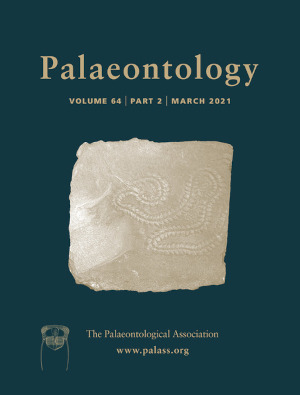Reg. Charity No. 1168330

Epidermal scales among modern reptiles are morphologically diverse and serve a variety of functions ranging from moisture balance to chemoreception. Despite being predominantly squamous‐skinned (scaly), the functional implications of this type of integument have never before been explored for a dinosaur. Re‐examination of the holotype of the theropod Juravenator starki (Kimmeridgian, Late Jurassic) reveals previously unseen diversity in its epidermal covering. In addition to the presence of short monofilaments on the dorsal and ventral parts of the tail, we identify distinctive scale patterns corresponding to discrete longitudinal bands of scutate, tuberculate and ornamented scales along the length of the tail. In modern squamous‐skinned amniotes, variation in scale architecture can be linked to functional differences between scale types. In Juravenator, distinctive circular nodes associated with the ornamented scales have recently been interpreted as integumentary sense organs. We also suggest that it is likely that the snake‐like scutate scales on the underside of the tail fulfilled a role related to mechanical protection rather than locomotory function. Whereas the literature on theropod epidermal structures has been dominated by discussions on the evolution and diversity of feathers, this study highlights the complexity of squamous integument in Juravenator, which is revealed as one of the most complex among known theropods. An exploration of the epidermal structures found in Juravenator and other non‐avian theropods reveals great complexity in the type and distribution of these structures across the clade, suggesting potential for the future inquiry into their taxonomic and biological importance.